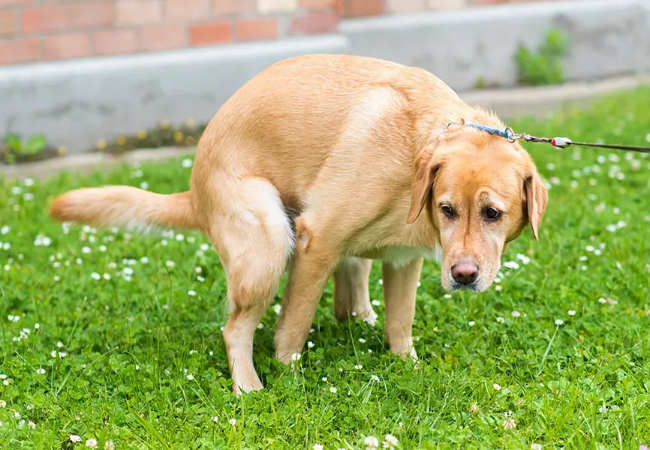How Often Do Puppies Poop 2025: Vet Reviewed Guide 🐾💩

In this article
How Often Do Puppies Poop 2025: Vet‑Reviewed Guide🐾💩
By Dr. Duncan Houston BVSc
Puppies often surprise new owners with how frequently they poop. While it may seem excessive, there’s a good veterinary explanation—and guidelines—for what's healthy. This detailed guide walks you through normal poop frequency by age, ideal timing for potty training, what stool consistency tells us, and signs that indicate trouble—all paired with supportive tools like Ask A Vet,
1. 🍼 Poop Frequency by Age Group
- 2–4 weeks old: Poop after every feeding—around 6–8 times a day.
- 8–12 weeks: Digestive system developing—expect 3–6 times daily.
- 3–6 months: Digestive system maturates—typically 2–4 bowel movements/day.
- 6–12 months: Standardizing—around 2–3 times daily.
- Adulthood (~12 months+): Settled routine—usually 1–3 times/day like adult dogs.
2. ⏱️ Timing & Potty Training Routine
Puppies often need to poop within 5–30 minutes after feeding, sleeping, playing, or drinking due to gastrocolic reflex.
- Take them out a few times—especially right after meals, naps, or activity.
- Consistent cues, location, and positive reinforcement are key.
3. ✅ What’s Normal vs. Concerning?
- Sudden increase or decrease in frequency may indicate issues like stress, parasites, food changes, or illness.
- Adult dogs: 1–2 times/day is typical—but dietary fiber or metabolism can increase to 3 times/day.
4. 💩 Stool Quality: The 4 Cs
Assess stool for:
- Consistency: Ideal—firm, log-shaped; constipated—pellet-like; diarrhea—soft or watery.
- Color: Normal—medium to dark brown; red, black, white, yellow need assessment.
- Contents: Foreign objects, mucus, blood—requires veterinary attention.
- Coating/odor: Slimy or foul-smelling stool could signal GI issues.
5. 🎯 Spotting Red Flags
- No fecal output for 24–36 hours → risk of constipation or blockage—call your vet.
- Frequent diarrhea (score 6–7 on chart), straining, vomiting, or lethargy → urgent vet attention.
- Blood/mucus, black/tarry stools, or sudden smell changes—medical review advised.
- Absence of pooping along with poor appetite, vomiting, or abdominal pain → emergency vet.
6. 🏡 Supportive Care & Home Management
- Stick to high-quality, age-appropriate puppy food with moderate fiber.
- Avoid sudden diet changes—transition over 7–10 days.
- Hydration is essential—monitor water intake.
- Consider puppy-safe fiber options (e.g., pumpkin) after 12 weeks if stool softening is needed.
- Record frequency, consistency, and appearance using the Ask A Vet app to track trends and intervene early.
7. 📊 Growth & Life Stage Considerations
| Age | Poops/Day | Notes |
|---|---|---|
| <2 mo | 6–8 | Immediately after feeding |
| 2–3 mo | 4–6 | Digestive maturing |
| 3–6 mo | 3–5 | Developing control |
| 6–12 mo | 2–4 | Approaching adult routine |
| 1 yr+ | 1–3 | Stable adult level |
8. ⭐ Useful Tips & Best Practices
- Always clean up promptly—gut health and hygiene matter.
- Supervised outdoor potty trips strengthen training consistency.
- Reward positive goings with praise/treats.
- Track patterns—weather, stress, diet all affect poop frequency.
9. 💡 When to Call Ask A Vet or Your Vet
- Deviations from normal patterns ≥ 48 hours.
- Repeated diarrhea, mucus, blood, or vomiting.
- Signs of abdominal pain or poor hydration.
- Suspected dietary, parasitic, or systemic illness.
Using the Ask A Vet app makes sharing your pup’s poop log easy and fast—so help is at hand.
10. 📌 Final Takeaways
- Puppy poop frequency changes with age—from every meal to routine adult habits.
- Regular, well-formed brown stools are a key sign of digestive health.
- Establish comfy potty routines and support digestive needs with diet, toys, and calm spaces.
- Observe closely for signs that indicate health issues and act early.






